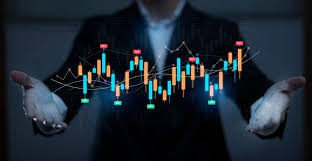Automated Trading in Forex A Complete Guide 1708098360

In the modern financial landscape, automated trading forex Online Trading CM has emerged as a key player for traders looking to maximize their Forex trading potential. Automated trading in Forex, often referred to as algorithmic trading, has transformed the way traders engage with the currency markets. In this article, we will explore the fundamentals of automated trading, its benefits, strategies, and the tools you can use to become a successful automated trader.
What is Automated Trading?
Automated trading refers to the process of using computer programs or algorithms to execute trading orders based on pre-defined criteria. Instead of relying on human intuition and analysis, automated trading systems analyze market data, identify patterns, and execute trades at high speeds without human intervention. This technology has revolutionized the Forex market, enabling traders to capitalize on opportunities with greater precision and efficiency.
Benefits of Automated Trading
Automated trading offers numerous advantages over traditional trading methods:
- Speed and Efficiency: Automated systems can execute trades within milliseconds, allowing traders to take advantage of favorable market movements before they vanish.
- Emotion-Free Trading: Automated trading removes emotional decision-making from trading, which can lead to more rational and consistent trading behavior.
- Backtesting Capabilities: Traders can test their strategies on historical data to evaluate their effectiveness before applying them in real-time trading.
- Diversification: Automated systems can manage multiple accounts and trading strategies simultaneously, enabling better diversification and risk management.
- 24/7 Market Monitoring: Automated systems can monitor the Forex market around the clock, executing trades even when the trader is unavailable.

Strategies for Automated Trading
There are several strategies that traders can use when implementing automated trading in Forex:
1. Trend Following
This strategy involves identifying and following market trends. Automated systems can analyze historical price movements and execute trades in the direction of the prevailing trend, aiming to capitalize on sustained price movements.
2. Mean Reversion
The mean reversion strategy assumes that prices will revert to their historical average over time. Automated systems can identify price extremes and execute trades that position the trader to benefit from the reversion to the mean.
3. Arbitrage

Arbitrage trading seeks to exploit price discrepancies in different markets or currency pairs. Automated systems can quickly identify these discrepancies and execute trades to profit from them.
4. Breakout Trading
This strategy involves identifying key support and resistance levels. Automated systems can execute trades when the price breaks through these levels, anticipating continued momentum in the breakout direction.
5. High-Frequency Trading (HFT)
HFT strategies involve executing a large number of trades in fractions of a second. Automated trading systems designed for HFT can capitalize on small price movements, requiring advanced algorithms and low-latency trading environments.
Choosing the Right Automated Trading System
When selecting an automated trading system, consider the following factors:
- Strategy Compatibility: Ensure the system aligns with your chosen trading strategy.
- Performance History: Review the system’s historical performance through backtesting and live trading results.
- Customization Options: Look for systems that allow you to customize parameters to suit your trading style and risk tolerance.
- User Interface: A user-friendly interface is essential for monitoring and managing trades effectively.
- Support and Community: Consider systems with active support channels and a community of users for shared insights and experiences.
Tools and Platforms for Automated Trading
Numerous tools and platforms are available to facilitate automated trading in Forex. Some popular ones include:
- MetaTrader 4 (MT4) and MetaTrader 5 (MT5): These platforms are widely used in Forex trading and offer built-in capabilities for automated trading through Expert Advisors (EAs).
- TradingView: Known for its advanced charting features, TradingView also allows users to integrate automated trading scripts via Pine Script.
- NinjaTrader: This platform offers comprehensive features for automated trading, including advanced chart analysis and strategy development tools.
- cTrader: cTrader allows traders to build, backtest, and deploy automated trading strategies using cAlgo, its algorithmic trading language.
Risk Management in Automated Trading
While automated trading can enhance trading performance, it is essential to implement effective risk management strategies:
- Set Stop-Loss and Take-Profit Levels: Establishing predetermined exit points can help protect your capital and lock in profits.
- Diversify Across Pairs: Trading multiple currency pairs can help spread risk and reduce the impact of adverse movements in any single pair.
- Regularly Monitor Performance: Continuously evaluate the performance of your automated systems to identify any deviations from expected results and adjust strategies accordingly.
- Limit Leverage: Using excessive leverage can amplify both profits and losses, making it crucial to use it judiciously.
Conclusion
Automated trading in Forex offers an innovative and effective way to trade the currency markets. With advancements in technology, traders now have the tools to execute trades with speed, efficiency, and discipline. By understanding various strategies, selecting the right automated trading system, and implementing sound risk management practices, traders can enhance their trading performance and potentially achieve greater success in the Forex market. As you venture into automated trading, remember to continually educate yourself and stay informed about the evolving landscape of Forex trading.